Paul Manley Back Pain and RSI Clinic
Paul Manley, M.A.O.(Manip), Registered OsteomyologistFor muscle and joint problems
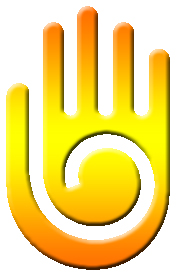
RSM (Royal Society of Medicine)
Specialist in the treatment of Musculo-skeletal problems
Location: 8-10 Boston Place, Marylebone, London NW1 6QH
Next to Marylebone Station, Main line trains and Bakerloo line
24/12/2025
 Upper neck |
 Sub-ox muscles |
 Neck rotation |
 Neck Side-bend |
 Ribcage bones |
This special section allows you to 'see' into the anatomy of the body in a virtual 3D environment. It illustrates what happens to the spine and muscles in the most common spinal problems.
You can 'play' with the anatomical displays in a simple and interactive manner, making them move through there normal motions. You can see the muscles stretching and contracting also..
I have been treating spinal problems for many years. This section contains a growing collection of illustrations and object movies which attempt to show in simple, visual terms what commonly goes wrong with the spine and other areas when we injure them.
It can be very helpful to be able to 'see' what has happened to us in order that we can directly understand the nature of the problem and the reasons for our pain. To that end I have created this section with as few words to get in the way as possible. If your curiosity is tweaked, then so much the better.
The most common traumas to the spine are usually described using very general jargon such as 'torn muscle', strained ligament', pinched nerve', 'slipped disc' and so on. Of even less use are terms like osteo-arthritis and spondylosis when used to describe our pain. They don't help very much and are often used inappropriately. Go to the GLOSSARY page if you are in need of terminological clarification.
The visual approach enables both sufferer and practitioner to understand, in a fundamental and mechanical sense, what happens to the body, how to avoid the pain, prevent it and reverse it. It takes many years of study and observation to glimpse the visualisations that I impart to you, for your benefit. Look, interact and learn.
You
should try to directly relate what you see on-screen to your own
anatomy. If you have any specific questions about any related problem
that you may be experiencing, then do not hesitate to email
me, I will reply to you as soon as I can.
 Body muscles Body muscles
|
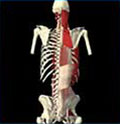 Spinal muscles Spinal muscles
|
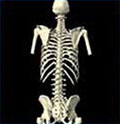 Spinal bones Spinal bones
|
 Lumbar muscles Lumbar muscles
|
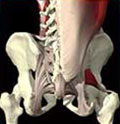 Pelvic muscles Pelvic muscles |
 Ribcage muscles Ribcage muscles
|
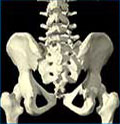 Pelvic bones Pelvic bones |
07925 616 753
Location: 8-10 Boston Place, Marylebone, London NW1 6QH
Next to Marylebone Station, Main line trains and Bakerloo line